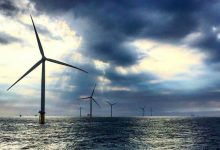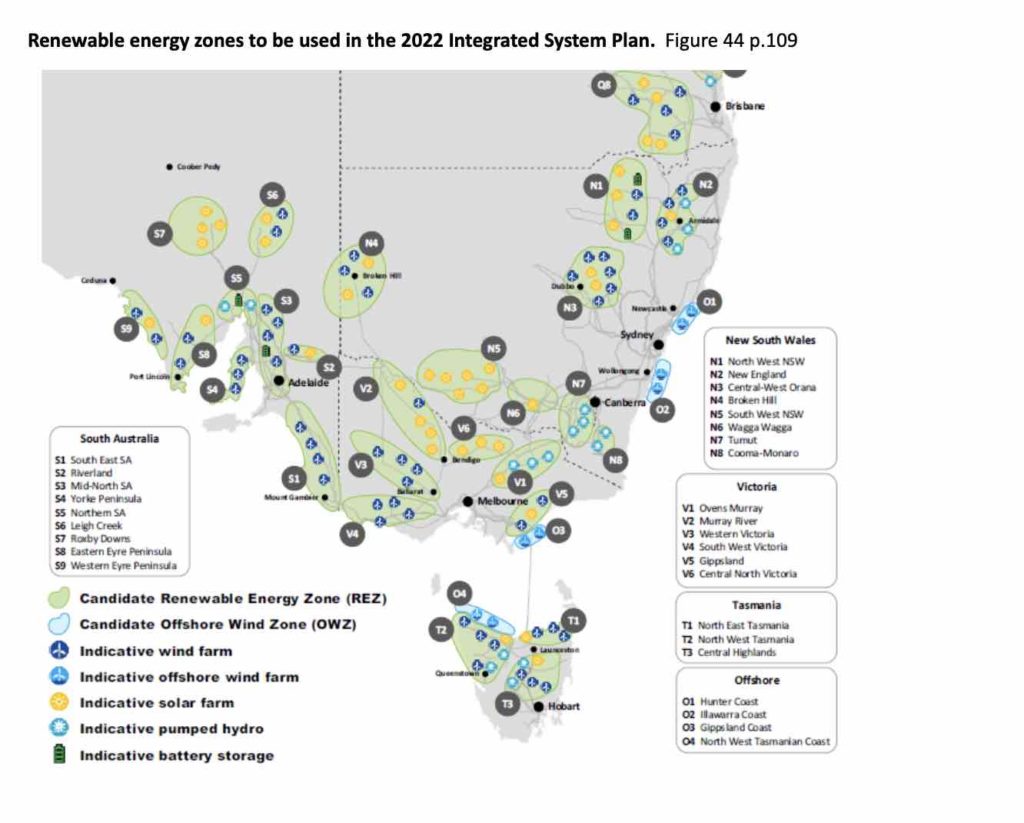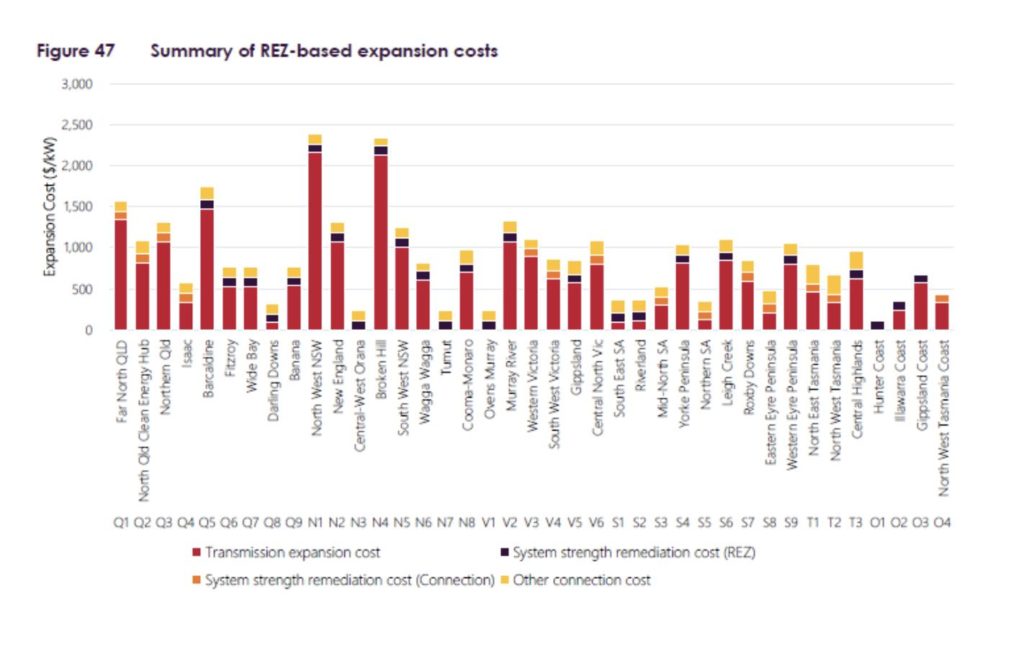Offshore wind is emerging as a major new component of Australia’s switch to a zero emissions grid and, more importantly, as a potential key to the country’s ambitions to become a renewable hydrogen superpower.
Australia has no offshore wind farms in operation or under construction. It doesn’t even have commonwealth legislation that will allow it, although that will hopefully change soon.
But offshore wind – courtesy of rapid (and surprising) cost reductions, has emerged a major new power play in Europe, and more recently Asia and north America, and Australia is blessed with good resources and, thanks to its offshore oil and gas industry, excellent know-how.
The Australian Energy Market Operator has now identified four significant offshore wind zones off the coast of NSW, Victoria and Tasmania, with a total nominal capacity of around 40 gigawatts. Even more significantly, all are located close to ports that could serve as major renewable hydrogen export hubs.
The 40GW is identified in its massive 2021 Inputs, Assumptions and Scenarios report prepared as part of its Integrated System Plan, its 20-year blueprint for the energy transition. It should be noted that it doesn’t include Western Australia, which also has strong offshore wind resources and a number of project proposals.
The most advanced offshore wind project in Australia is the 2GW Star of the South proposal off the coast of Victoria, which is in the process of seeking environmental approvals and has already mapped out an (underground) transmission route to the Latrobe Valley.
About one dozen other large scale offshore wind projects – some of them proposing offshore wind platforms because of the depth of the ocean – are also being drawn up.
There are also new offshore wind projects listed in the new generators report here, including information from Green Energy Partners and Newcastle Offshore Wind.
This appears to be the first full official recognition of the potential for offshore wind to contribute to an energy transition in Australia. Offshore wind did not figure in its proposed map of renewable energy zones that it published last December.
The inclusion in the AEMO report increases the pressure on the government to finally put up legislation to allow the projects to proceed. Some hope that the legislation could make an appearance in August or September.
It is also expected that the Morrison government may use that legislation to boost its diminishing climate credentials at the November Glasgow climate summit, known as COP26, even though offshore wind barely rates a mention in its ‘technology roadmap’.
Interestingly, and not without some controversy, Australia’s offshore energy regulator Nopsema, which is funded by the oil and gas industry, is to become the regulator of offshore renewable energy in Australian commonwealth waters.
The new offshore wind zones identified by AEMO are Gippsland, Hunter Coast, Illawarra Coast, and North West Tasmanian Coast. The Gippsland offshore zone is now separated from the onshore zone, which will better recognise the offshore resources in the modelling.
AEMO are going to model each zone with a notional resource limit of 10 GW, meaning that there is around 40GW of nominal capacity in the zones.
The AEMO document suggests that the Hunter offshore wind zone has the lowest cost to expand of any renewable zone in the National Electricity market, and it is the closest to actually having around 10GW of offshore wind project identified.
One group with a lot of interest in the potential of offshore wind, is the Maritime Union of Australia, which has about 13,000 workers in the shipping, offshore oil and gas, stevedoring, coal export services and commercial diving.
The MUA says its members currently handle wind turbines and solar panels in ports across Australia, and want to be part of building and maintaining future offshore renewable energy projects.
“Alongside the Electrical Trades Union, we have spent two years advocating for the full inclusion of offshore wind in AEMO’s energy system planning,” MUA assistant national secretary Adrian Evans said in an emailed statement.
“Our members include highly skilled seafarers working in offshore oil and gas around Australia. They can transfer these skills to building offshore wind projects.
“The location of the new offshore wind zones off Newcastle, the Illawarra and off Gippsland also provides job opportunities for regions that are already impacted by the energy transition.
“We know that a net zero emission, renewable energy-powered economy is necessary to limit the worst impacts of climate change. The development of an offshore wind industry would provide the opportunity for fossil fuel workers to do the important work of delivering Australia’s renewable energy future.
“Now we need the federal government to step up and deliver a regulatory framework for offshore wind that is robust and fit for purpose, and that will allow offshore wind projects to progress. Billions in investments and thousands of jobs are waiting on this legislation.”












